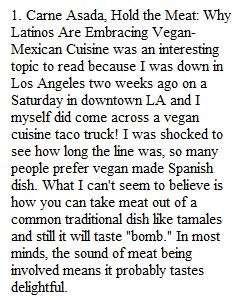


Q How much protein do we need: In this chapter you will be learning about protein. Interestingly, most American consume 2-3 times more dietary protein than they should. This does not include those individuals that take pre- or post-workout shakes, which can be up to 25 grams per scoop of protein powder. In addition, many Americans tend to focus on protein because "protein helps me feel fuller longer" or "in my family, we grew up with meat at every meal." Do we know (or appreciate) the long-term health effects of eating double (or more) the amount of protein on our bodies? I think we know the answer to this question given the rise of diabetes, heart disease, obesity, and cancer. Recently, for the first time in history the 2015 Dietary Guideline recommended American teenage boys and men to reduce the amount of protein consumed. WOW! What to do: Read the New York Times article, "New Dietary Guidelines Urges Less Sugar for All and Less Protein for Boys and Men (Links to an external site.)" and NPR's "Carne Asada, Hold The Meat: Why Latinos Are Embracing Vegan-Mexican Cuisine (Links to an external site.)" and watch the posted video below. Video 1: Dr Greger's Protein Combining Myth video (4 min). Useful Canvas Help pages on; How do I reply to a discussion as a student? (Links to an external site.) How do I view the rubric for my graded discussion? In your initial post, answer the following questions (number your responses based on the questions); 1. Comparing articles and video, which one did you find more interesting (or something newly learned)? Explain why you found this information interesting? 2. Reading Section 6.6 in your textbook and using data from your iProfile Average report (Diet Project Part 1), calculate and share your recommended dietary allowance (RDA) for protein (your answer should be in grams per day). Are you over or under your protein recommendation? By how much, double, triple? 3. What is your main protein source, animal-based or plant-based? Can you identify opportunities for improvements, if so what are they? Be specific and make sure any suggested changes are sustainable. Also keep in mind the recommendations that contribute to a healthy diet (Chapter 2). For example, do not state you will eat 3 ounces of fish, if you do not like fish. This is not realistic nor sustainable. I am looking for creativity and authentic-self awareness. Discussion Directions: In your initial post, conclude your post by signing your name. When you reply to your classmates, please type the name of the classmate you are responding to, type your thoughtful message to that person, and type your name at the bottom of the message. Make sure to use proper grammar, capitalization, (I instead of i) and punctuation in this college level course in all correspondence. Please avoid “text” or “twitter speak” when corresponding. Summary: *Your classmates responses will not be visible to you until you have submitted your own initial post. Grading: This assignment is worth 20 points. Grading will be based on how well you included information from your textbook reading timely responses, well-developed, how you engaged your classmates, thoughtful toward getting to know your classmates, and "ah-ha" moments.
View Related Questions